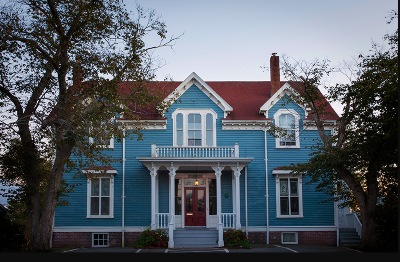Quaker House - Dartmouth, Nova Scotia
The Quaker House: A Trip Through Time
The Quaker Whaler House is the earliest building in Dartmouth, Nova Scotia (1785 ). Built by William Ray, a Quaker and cooper from Nantucket who moved to Dartmouth in 1785-86 as a whaler. Its materials and building and construction techniques carefully resembles Quaker architecture in Nantucket, such as the asymmetrical facade design and stone structure. The Quakers settled in Dartmouth for six years (1786-1792) prior to a lot of them left for England. The most popular Quaker was abolitionist Lawrence Hartshorne.
Quaker House has been restored and furnished to reflect this period. Visitors will find out the history of Nova Scotia's Quaker settlers when visiting this analyzed historic home. Directed tours are readily available throughout the summertime from costumed heritage interpreters. Delight in a stroll through our totally researched and analyzed heritage garden which is readily available on the museum premises. Quaker House is run by the Dartmouth Heritage Museum.

Due to the War of Independence, Nantucket residents and the New England whaling industry viewed as 80% of the whaling fleet was ruined. Teams were caught and imprisoned, while blockades prevented any from earning money at sea. When the war ended, too much competition has actually emerged in surrounding locations, and the final blow was when the British Parliament attached a duty to American whale oil-- an essential good utilized for lighting in both lamps and candle lights. To leave this tax, in addition to the strong competition, a deal was struck with Governor John Parr to migrate Nantucket whalers to Nova Scotia. The first wave of Quaker settlers appeared in 1785. They got here and built their homes on the structures of the first settlement, and also constructed wharves, two spermaceti candle light factories, storage facilities, and workshops.
The Dartmouth Whaling fleet went through a fast expansion and ended up being the competitor of every whaling centre throughout the world. In fact, it was a little too effective and even rivaled the mighty British and West Indies markets. In a ploy to bring the success home to the British Isles, the Quaker community was made a remarkable deal and the whaling industry moved to Milford Haven in Wales after being in Dartmouth for barely a years. A few of the Quakers stayed in Dartmouth nevertheless, the most significant being Seth Coleman. Among his grandsons, a master whaler out of Nantucket, signed on brand-new team member Herman Melville, the author who composed literary timeless Moby Dick.
In 1971, after a surge of urban renewal led to the damage of many historical homes in the downtown core, the Museum Society preserved Quaker House and converted it to an interpreted historical house available to the general public every summertime. Originally the house of William Ray, a Cooper (barrel maker) and the house is thought about the oldest standing structure in Dartmouth. Quake House is restored and provided to reflect its 1785 building date. Your home is a municipally and provincially registered historic site. It is representative of its building and construction period and reflective of the Nantucket Island domestic architecture from which it is obtained.
If you’re planning a trip to see the Quaker House, there are a few resources that can help you make the most of your visit. The Nova Scotia Visitor Information Centre is a great place to start. They have six locations throughout the province, including one in Halifax, where you can drop in for information on Nova Scotia’s travel experiences. Their friendly and knowledgeable travel counsellors and tourism ambassadors can help you plan your trip and make the most of your time at the Quaker House.
Another useful resource is the Tourism Nova Scotia website. Here you can find information on visitor centres, travel guides, and top attractions and experiences throughout the province.